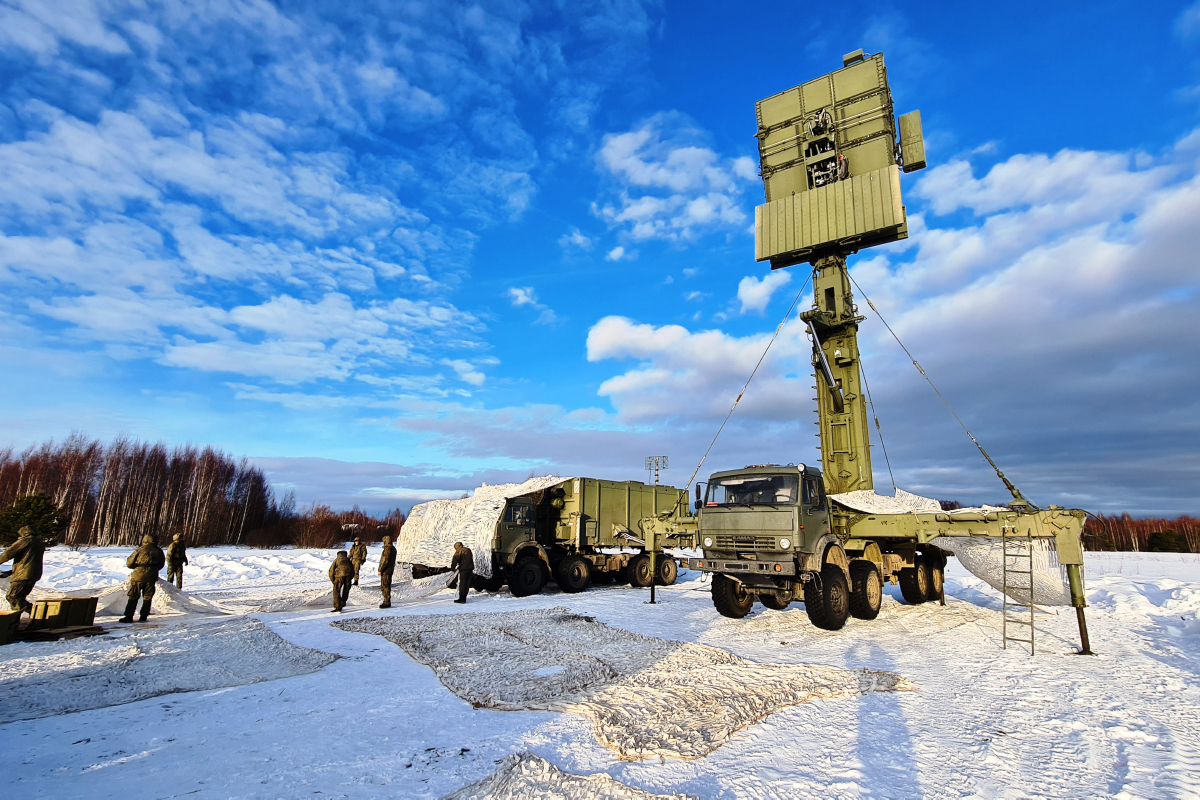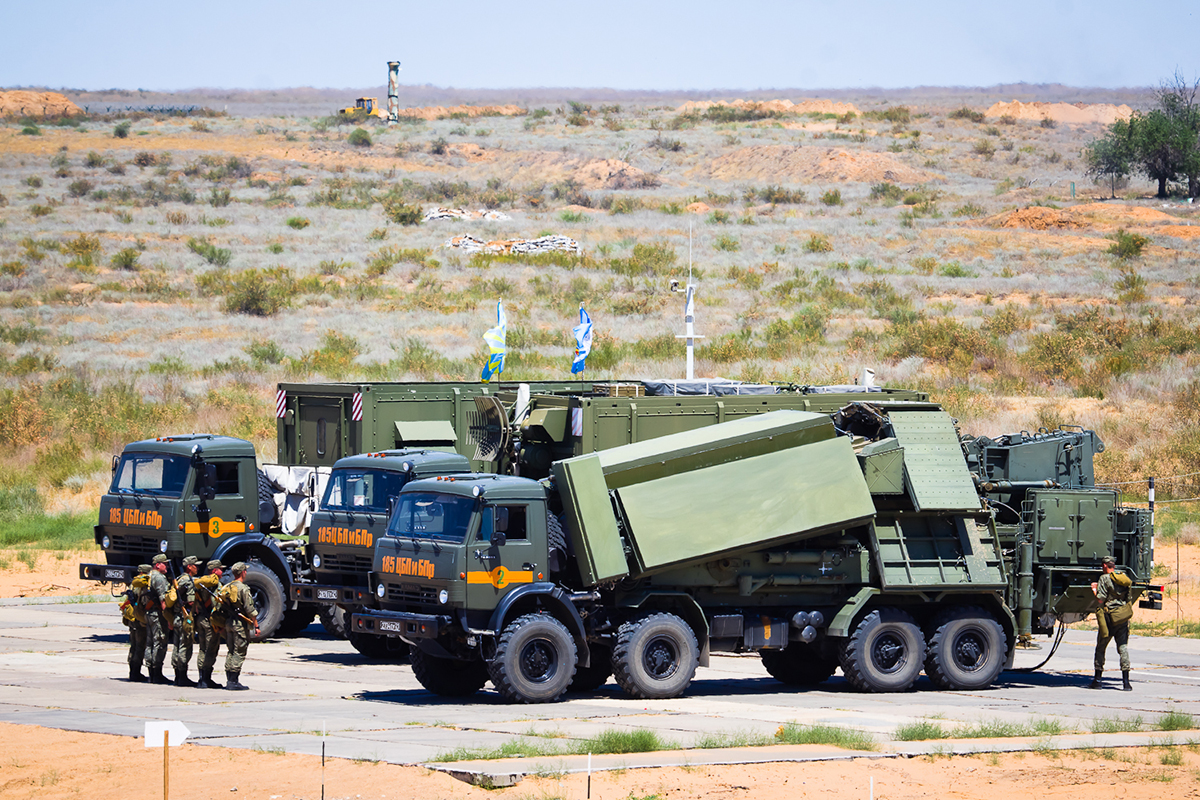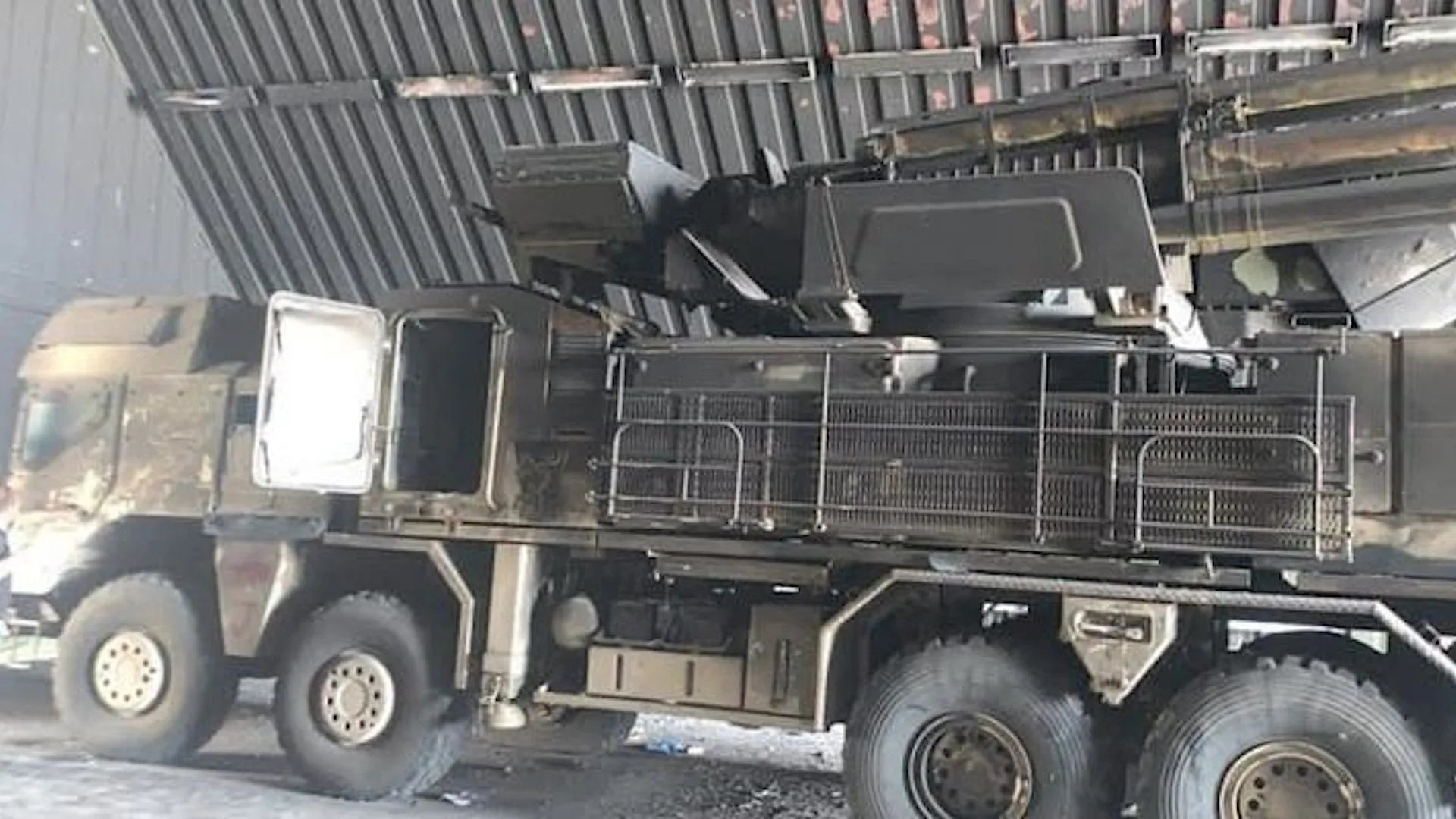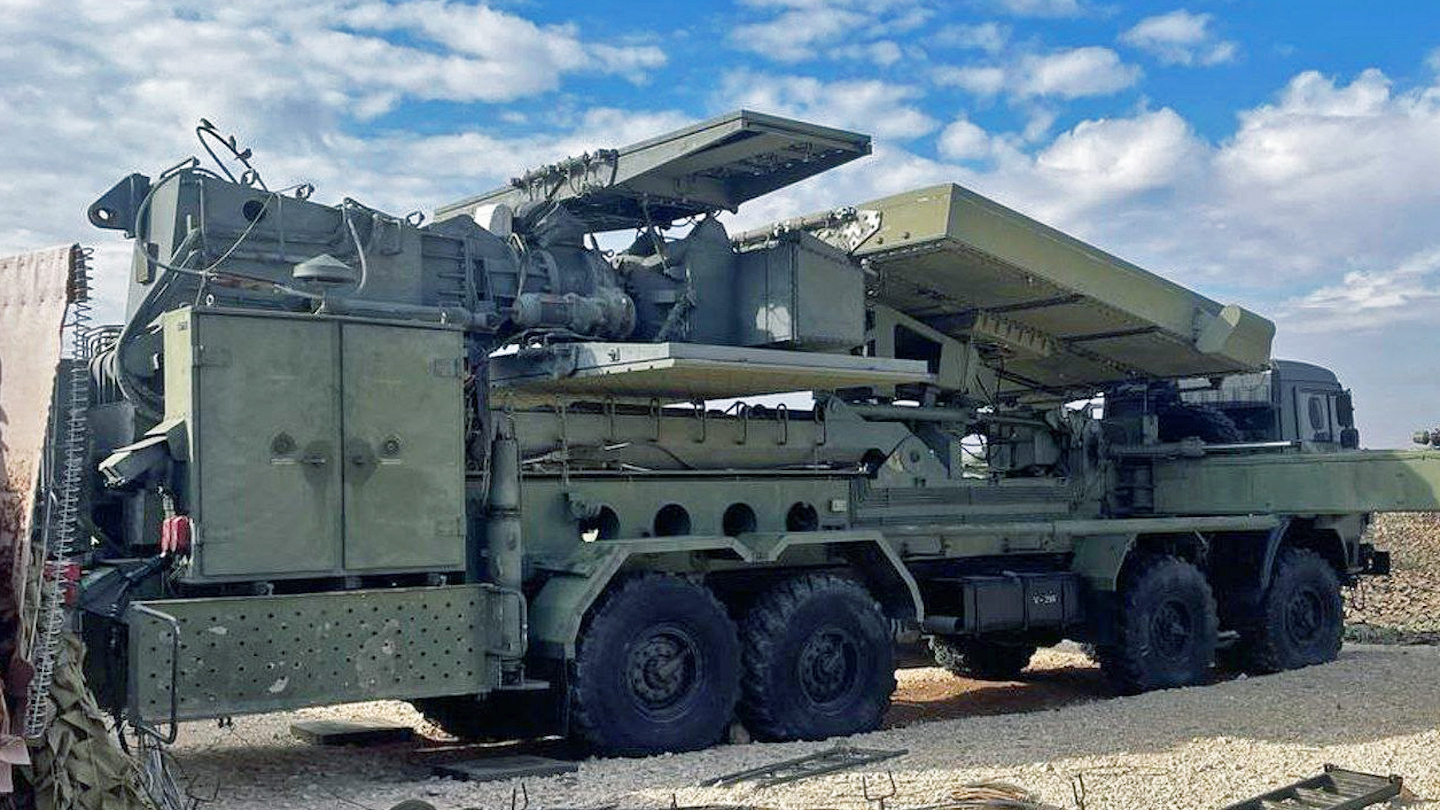An advanced Russian air defense radar system is among the equipment captured by anti-regime forces in Syria as they continue their rapid push south, a development that has the potential for serious repercussions in the wider region. The Podlet-K1 radar system, also known by the designation 48Ya6-K1, is one of the more modern pieces of equipment in the Russian inventory, has been employed in the war in Ukraine, and would be a significant intelligence windfall if it were to possibly find its way into Western hands.
A photo of the captured Podlet-K1, which is mounted on a KamAZ-6350 8×8 truck chassis, appeared recently on social media, although when it was taken remains unclear. Furthermore, there’s no confirmation of its exact location, although some have suggested that it was captured during fighting around the city of Hama, in west-central Syria.
A logo that appears in the corner of the photo suggests that the rebels responsible for capturing the system were from the Islamist militant group Hayat Tahrir al-Sham (HTS). They have a long and involved history in the Syrian conflict, which includes spearheading the current assault toward the south.
The photo shows the vehicle carrying the radar antenna in its lowered position. The complete system also includes another two trucks — an operator control station and an energy support vehicle — which may or may not also now be in rebel hands.
In promotional material, the Podlet-K1 is described as being optimized to detect aerial targets flying at low and very low altitudes. It does this using a phased-array radar antenna, operating in the S-band and reportedly able to track up to 200 targets simultaneously. The main antenna is complemented by a pair of other radars used for identification friend or foe (IFF) functions.

Introduced to service around 2018, the Podlet-K1 can be used alongside the S-300PMU-2 and S-400 long-range surface-to-air missile systems, complementing their own detection radars and other sensors. The reported maximum detection range of the Podlet-K1 is 200-300 kilometers (124-186 miles), although this would vary greatly in real-world situations, depending on many factors, including target type, altitude, and more.
According to Ukrainian media reports, the complete system is worth around $5 million.

It’s not clear if the Podlet-K1 was formally part of the Syrian Armed Forces, or if it belonged to a Russian unit operating in the country, although Syrian and Russian air defenses are already closely aligned in some respects. There are unconfirmed reports it was captured from the Syrian 25th Special Forces Division, although that doesn’t preclude it from being a Russian-operated system co-located with this unit.
Already, Syrian rebels have captured significant quantities of military equipment as they advance south, including tanks, infantry fighting vehicles, rocket launchers, and even aircraft.
Other examples of air defense systems have also been captured, including this Pantsir-S1 short-range air defense system.
The Podlet-K1 would seem to be the most interesting item identified so far, however, on account of its modernity and the fact that, as far as we know, Ukraine has not managed to capture an intact one from Russian forces fighting there.
At least two Podlet-K1 systems, or parts of them, have been destroyed by Ukrainian forces. One of these was within Russian territory when it was hit, by a long-range drone strike in September of this year.
Before that, as TWZ reported in July of 2022, another Podlet-K1 was apparently targeted by an M31A1 guided multiple-launch rocket system (GMLRS) in the Kherson region of Ukraine.
The war in Ukraine has already provided plenty of examples of high-end Russian military equipment being captured and then being subject to extensive analysis. This has even included some items being transported to the United States for a technical evaluation.
Equipment captured in Ukraine has, in particular, provided insights into Russian electronic warfare capabilities, including containerized components of vehicle-borne systems, among them signals intelligence (SIGINT) systems, as well as airborne jamming pods.
Like these, the Podlet-K1 would be of significant interest to military intelligence agencies, especially those of the United States and NATO, providing insight into the capabilities of one of Russia’s more modern air defense radars.

Knowledge of the Russian military’s ability to detect low-flying aerial targets over the battlefield — including drones and cruise missiles, but also helicopters and fixed-wing aircraft — would be especially useful when it comes to fielding countermeasures.
Having insight into the workings of the Podlet-K1 could allow the West to develop means not only of blunting its capabilities but also of feeding it false signals and devising tactics to exploit its weaknesses, both in terms of operations and in the cyber realm.
While the United States is well known for its extensive so-called foreign materiel exploitation (FME) programs, dating back to the earliest years of the Cold War, actually getting the Podlet-K1 into the hands of U.S. or other NATO analysts is another matter. The situation on the ground in Syria is confused and it’s possible that the Podlet-K1 is no longer in anti-Assad forces’ hands, although we have seen no proof of that being the case. There is also a possibility that it might have been destroyed by now, perhaps even being targeted by a Russian airstrike to prevent it from yielding any sensitive information.
Bringing Russian-made equipment out of an active war zone outside of Ukraine is not impossible, however. In this case, one possible route out of Syria might involve the system being handed over via Turkish intelligence.
Back in June 2020, the U.S. military reportedly spirited a Russian-made Pantsir-S1 out of Libya, after it was captured from forces aligned with rogue general Khalifa Haftar. Turkey was also involved here as an intermediary. The operation was ostensibly aimed at preventing the system from falling into the hands of any number of militant and terrorist groups in that country, but there would also be clear intelligence benefits, too, as you can read about here.

Reportedly, a U.S. Air Force C-17A Globemaster III transport aircraft flew into Zuwarah International Airport, to the west of Tripoli, picked up the Pantsir-S1, and then flew it to Ramstein Air Base in Germany.
Whatever happens next with the captured Podlet-K1 vehicle, its fate is emblematic of the dramatic progress made by the Syrian rebels in a short amount of time. The vehicle’s loss is symptomatic of the regime forces — and their Russian backers — having been caught by surprise. As long as the rebel push continues, they are likely to get their hands on more equipment, and the capture of further high-end Russian items shouldn’t be ruled out.
Contact the author: thomas@thewarzone.com
